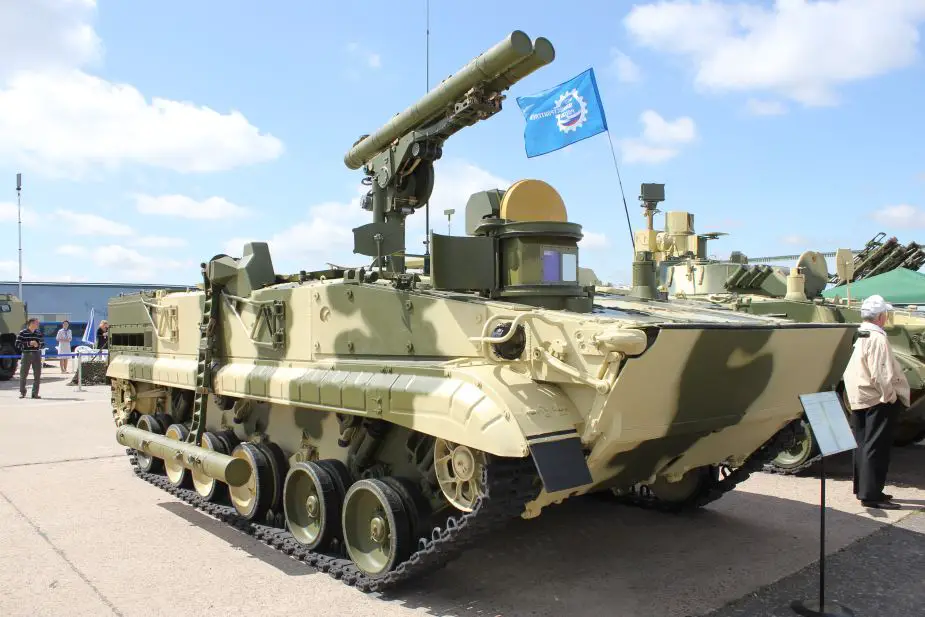Breaking news
Russia's Eastern district to receive Khrisantema-S self-propelled antitank vehicles in 2018.
Self-propelled antitank Khrisantema-S missile guns will become operational in the artillery unit of the Eastern Military District in Buryatia this year, the district said. In 2018 the artillery formation of the Eastern Military District deployed in Buryatia is scheduled to receive a batch of self-propelled antitank Khrisantema-S missiles," it said.

Khrisantema-S self-propelled anti-tank gun system
(Source : Army Recognition)
Designer General of the Constructive Machine-building Bureau (KBM) Valery Kashin earlier said the self-propelled Khrisantema-S would be upgraded according to available experience. The KBM told TASS it had completed acceptance trials of the upgraded combat vehicle of Khrisantema-S complex which is equipped with a Belarussian-made TV-thermal imager.
The new imager designed by the Peleng Company in Minsk, Belarus, demonstrated high reliability and targeting precision against the previous device. Khrisantema-S previously used a Ukrainian-made imager.
"Due to additional laser system for antitank missile targeting the operator can fire in salvo at two different objects at a time by using various targeting channels," the district said.
Khrisantema-S is designed to destroy modern and perspective tanks of any type, including those with explosive-reactive armor. It has its own radio station to detect and track targets and control the targeting of the missile. Tracking is controlled automatically without the operator.
The Khrisantema-S is designated to destroy modern and perspective tanks of any type, including those protected by active armor. The 9M123 missile is supersonic, flying at an average speed of 400 m/s or Mach 1.2 and has a range of between 400 and 6,000 meters. The Khrizantema is unique among Russian anti-tank guided missiles as, depending on the variant the missile, it can either be guided by laser or radar.
.




























